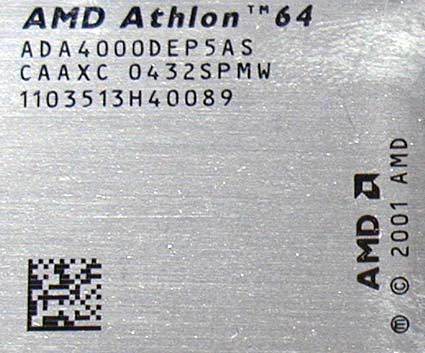AMD's Athlon64 4000 and FX-55: Nails in the P4 EE's Coffin?
The Athlon64 4000+ Comes To Market
Four months after the introduction of AMD's Socket 939 platform, AMD latest processor crop is here. Only a week after Intel's announcement to drop plans of hitting 4 GHz any time soon, AMD now tries to hit Intel where it hurts with an even faster and architecturally improved device. AMD's latest processor performance success is also based on how AMD, with its Athlon64 4000+ and FX-55 launches, still manages to wring more performance out of its 130 nm process. This is also after Intel switched to 90 nm in February.
The 2.6 GHz Athlon64 FX-55 and the Athlon64 4000+ represent AMD's latest processor launch since the debut of the 2.4 GHz FX-53. However, the 4000+'s benchmarks are identical to those of the FX-53. Does the Athlon64 thus merit its 4000+ label?
One interpretation is that AMD is now setting the shortly-lived performance standards in the AMD and Intel processor performance wars. With the Athlon64 3800+ the chip firm introduced a QuantiSpeed rating that exceeded the clock speed of Intel's fastest processor for the first time. Now, the 4000+ sets another landmark that can be considered a serious challenge for Intel.
Additionally, AMD is phasing in its 90 nm Winchester cores, which are really shrunken Newcastle cores with a 512 kB L2 cache.
AMD is also making the move with considerably less fanfare than when Intel shifted to its 90 nm production process. The company will also initially use the high-volume process to make its lower-speed devices. The downside of AMD's quiet shift to 90 nm is that you will have to study the data sheets in order to tell the 130 nm and 90 nm versions apart as the processors' packaging and documentation will not make the distinction.
Since AMD's 90 nm Athlon64 3500+ is rated at 67 W, while the 130 nm part consumed a maximum of 89 W, we expect the new core to be able to finally hit the 3 GHz barrier within six months. However, the race to 3 GHz also depends on how fast Intel can get back on the high-clock speed road again, and entice AMD to offer even faster processors.
Get Tom's Hardware's best news and in-depth reviews, straight to your inbox.
Current page: The Athlon64 4000+ Comes To Market
Next Page Facts On AMD64 Processors
Patrick Schmid was the editor-in-chief for Tom's Hardware from 2005 to 2006. He wrote numerous articles on a wide range of hardware topics, including storage, CPUs, and system builds.
